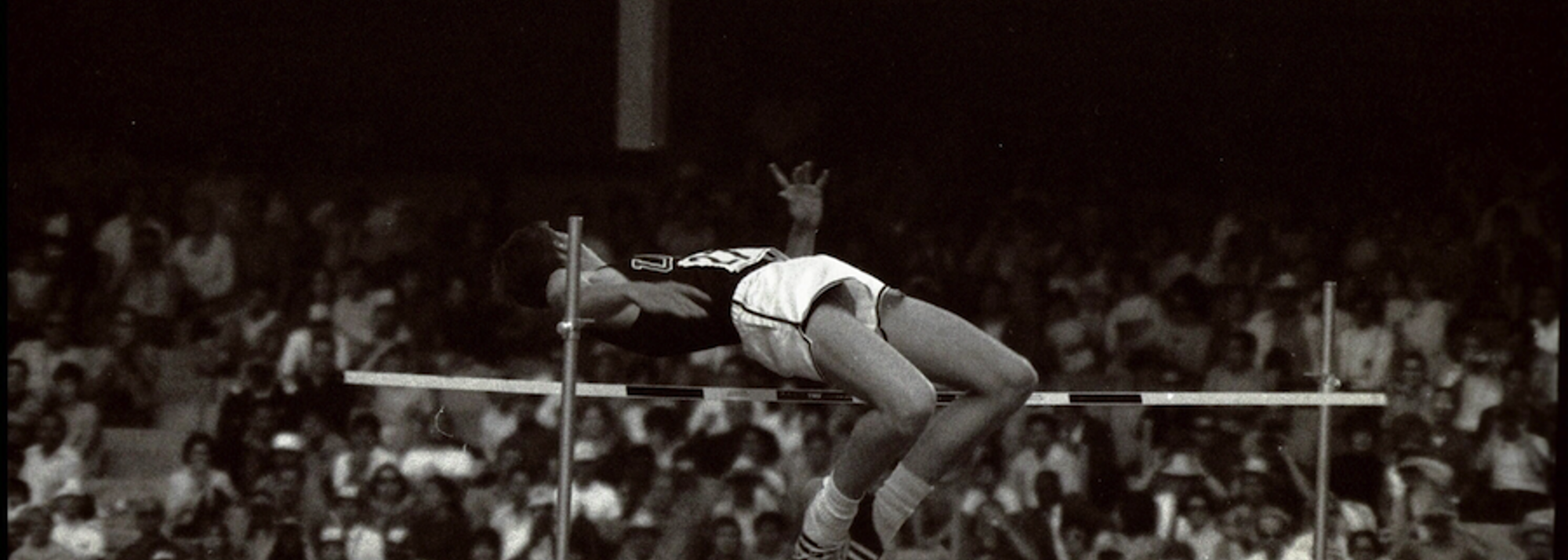Dick Fosbury
From hand-clap pioneer Willie Banks to A.C Gilbert, the man who invented the pole vault box, we continue our alternative history lesson of track and field. High jump legend Dick Fosbury tells us how the phrase ‘Fosbury Flop’ made it into the dictionary.
In the high jumping dark ages, most jumpers would run in, spring off one footed and straddle their other leg and body over the bar headfirst. Other techniques included the scissor jump, which requires the jumper to perform a sideways hurdle-like jump over the bar, nowadays often used by jumpers in their warm up routines.
Then came Fosbury and messed things up.
The American began perfecting his new technique in the mid-60s, but it was at the 1968 Summer Olympics that his revolutionary backwards ‘flop’ was first unveiled to the masses. Few athletes have had such a dramatic impact on their event as Fosbury did in the high jump at the games of ‘68.
Fosbury ran in, took off from the left foot, pivoted his right leg with his back to the bar as he rose, and then lifted his legs in a flick action to clear the bar and fall on his back.
Spectators stopped what they were doing to watch Fosbury's revolutionary technique
This never-before-seen style triggered a Mexican wave of befuddlement.
“In 1968 Mexico, the spectators were so surprised by what I was doing, that they stopped cheering and just looked,” remembers the 67-year-old.
“Even when the marathon runners came in after running 26 miles, there was silence. But my preference [for jumping] was quiet anyway,” he adds.
He won Olympic gold with a leap of 2.24m, a new Olympic record.
At the 1972 Munich Olympics four years later, 28 of the 40 high jump competitors used his technique. Within ten years of its first international outing, the majority of the world’s best jumpers had adopted the ‘Fosbury Flop’, as it had become known.
“I understand that it’s absolutely unique. I’m very proud that I received the naming rights,” says the retired civil engineer with a grin on his face. But the term by which the style is known did not appear over night.
Fosbury retired from the sport early because he "had to make a living"
“To tell the truth, the first time that I was interviewed and asked ‘what do you call this?’ I used my engineering analytical side and I referred to it as a ‘back lay-out’.
“It was not interesting, and the journalist didn’t even write it down. I noted this. The next time that I was interviewed, that’s when I said ‘well, at home in my town in Medford, Oregon, they call it the Fosbury Flop’ – and everyone wrote it down.
“I was the first person to call it that, but it came from a caption on a photo that said ‘Fosbury flops over bar’.
“The context in Oregon was that our town was on a river, very popular for fishing, an hour from the Pacific Ocean. And when you land a fish on the bank, it’s flopping. That’s the action, and so it’s a good description by a journalist, and I remembered it.”
Following his 2.24m clearance in Mexico, Fosbury asked for the bar to be raised to 2.29m, hoping to break Valeriy Brumel’s world record of 2.28m. He failed all three attempts, but knew that his new technique had changed the high jump forever.
Javier Sotomayor, Fosbury, Patrik Sjoberg, Barshim and Bondarenko checking out Sotomayor's current WR of 2.45m
“When I was competing, I attempted to break the world record [of 2.28m] set by Valeriy Brumel. I didn’t manage it.
“But after I finished competing [in 1972] I predicted that in my lifetime – and I’m still living – that someone would jump 2.50m. And I did that partly because of intuition and because I believed that it was possible.
“I’m really pleased that these young guys are pushing each other to break Soto’s record,” he says pointing at Mutaz Barshim and Bogdan Bondarenko.
No pressure then, guys…




